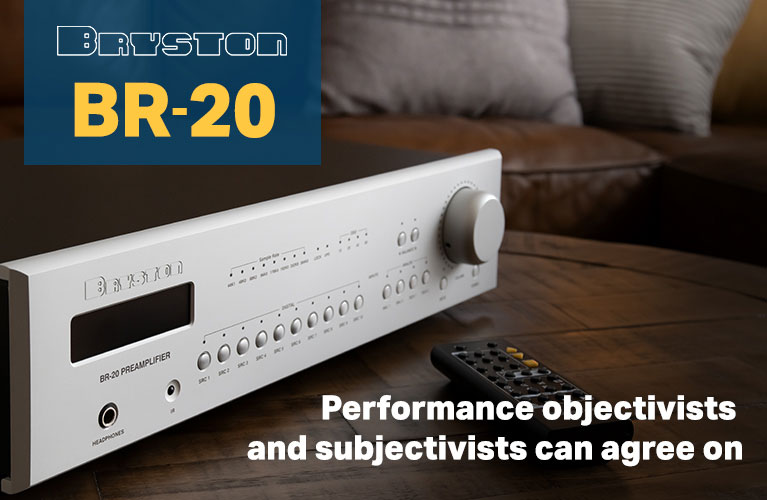Note: for the full suite of measurements from the SoundStage! Audio-Electronics Lab, click this link.
 There’s a new hi-fi hatchery located an hour and a half west of my home in Toronto, Canada. Cambridge, Ontario, is the headquarters of Saturn Audio, a fairly new company that’s booting up a full suite of audio components. That’s cool, and the more the merrier—it’s great to have more choices for audio equipment, and a new Canadian company is most welcome from my viewpoint. But take a quick look at the region surrounding Cambridge—it’s a short drive from Innerkip, Ontario, which was the home of Blue Circle Audio and still is home to Gilbert Yeung, the company’s owner. Blue Circle was the manufacturer of almost-bespoke high-end amps, preamps, DACs, and phono preamplifiers up until 2019, when Yeung decided that his heart was really in the circuit-design end of things and wanted to reduce the front-end customer-facing part of his business. This is no coincidence.
There’s a new hi-fi hatchery located an hour and a half west of my home in Toronto, Canada. Cambridge, Ontario, is the headquarters of Saturn Audio, a fairly new company that’s booting up a full suite of audio components. That’s cool, and the more the merrier—it’s great to have more choices for audio equipment, and a new Canadian company is most welcome from my viewpoint. But take a quick look at the region surrounding Cambridge—it’s a short drive from Innerkip, Ontario, which was the home of Blue Circle Audio and still is home to Gilbert Yeung, the company’s owner. Blue Circle was the manufacturer of almost-bespoke high-end amps, preamps, DACs, and phono preamplifiers up until 2019, when Yeung decided that his heart was really in the circuit-design end of things and wanted to reduce the front-end customer-facing part of his business. This is no coincidence.
For years I’d been bumping into René Evans, now owner of Saturn Audio, at hi-fi shows. For nearly a decade prior to launching Saturn, Evans had owned Mystic Audio, a bricks-and-mortar stereo store in Cambridge, and I’d often find him hanging out with Yeung in the Mystic Audio room, as he and Yeung had become good friends, and Mystic Audio carried Blue Circle products.

So when Yeung decided to wind down Blue Circle Audio and concentrate on circuit design, Evans took the plunge and formed his own company. Now, Evans had a long history in manufacturing, engineering, and process improvement, but he wasn’t a designer of hi-fi gear. But he sure did know hi-fi systems. And so Saturn Audio was born, with Yeung doing the circuit designs and Evans handling everything forward of that crucial point.
The Saturn 401 phono stage, which retails for $2900 (all prices USD), is one of the company’s first products. There are also the 200 Series DAC and 100 Series power filter available, with a preamp, amplifier, and integrated amplifier due to come online shortly.
I am reassured that the circuit of the Saturn 401 was designed by Yeung. I clearly recall being sideswiped by the Blue Circle BC703 phono stage when I reviewed it, and I’ve seen how much of a savant Yeung can be—a prime example being the mirror-imaged circuit boards in the BC-2 monoblock amplifier, one of Blue Circle’s first products. Point being, Gilbert is a stone-cold genius. He knows his way around a phono stage.
Close to home
Saturn Audio is proud of their products. I spoke at length with Evans and got the lowdown. Of particular note to this frostbitten Canadian boy, the 401 is manufactured entirely in Canada from—wherever possible—Canadian-sourced parts.
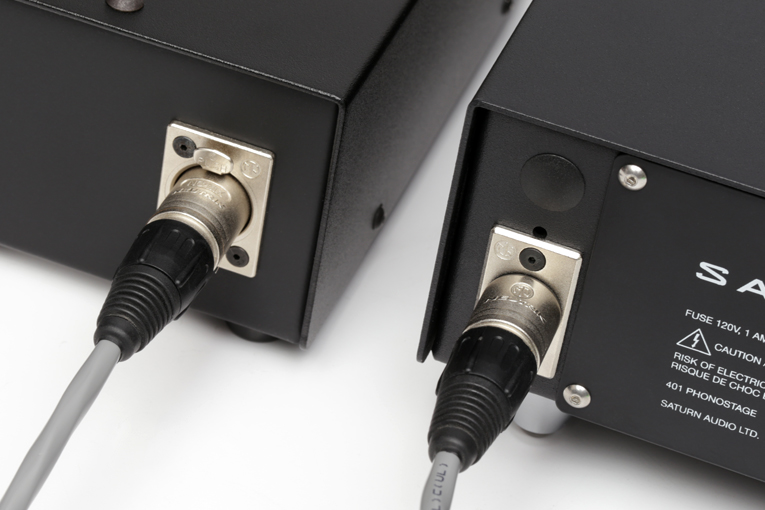
The 401 exudes competence. It’s a two-chassis stage with an external power supply that attaches to the main unit via an umbilical. The main chassis is solid, made from heavy-gauge steel with a nice, thick aluminum faceplate and a swish-looking double blue LED stripe recessed into a circle on the front. The stripe and circle evoke Saturn the planet and its attendant rings. It’s an understated, elegant look.
I was particularly impressed by the main unit’s feet—they’re nicely made cones, but in place of the typical hard, furniture-scratching tips that I’ve become accustomed to, the feet terminate in clear rubber buttons. Closer examination of Saturn’s website reveals that these tips are 3M Bumpons, made of clear urethane. The tips of the cones themselves have small recesses that firmly capture the Bumpons and stop them from peeling off when the chassis is pulled across the shelf. This design detail doesn’t seem momentous, but it’s an extremely cool idea, and it’s one that greatly increased my enjoyment when setting up and moving the stage around in my system.
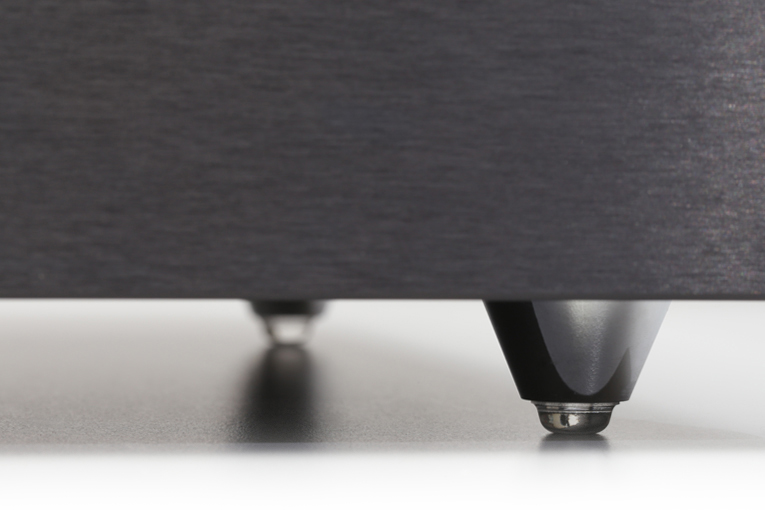
There’s no power switch. The 401 is switched on when it’s plugged in. On the bottom of the power supply is a big, yellow sticker warning that the 401 is chock-full of capacitors and that you should ensure they drain completely prior to popping the hood.
Heavy-duty capacitor loading is a Gilbert Yeung/Blue Circle thing. I recall Gilbert pointedly telling me that his BC703 phono stage would continue to operate for several minutes after the power cord was detached. This, he told me, gave the BC703 significant isolation from the mains, endowing it with some of the benefits of a battery power supply.
Sure enough, when I pulled out the power cord prior to changing the impedance settings, the blue LED continued to glow for about 45 seconds.
There’s sufficient flexibility within the Saturn 401 to accommodate pretty much any cartridge. The impedance settings are sensibly chosen and accessed by moving one jumper for each channel. You’ve got to unplug the thing and remove the lid, which means unscrewing eight hex bolts. The jumpers are small but manageable, although I had to double up my cheap readers in order to clearly make out the markings on the circuit board.
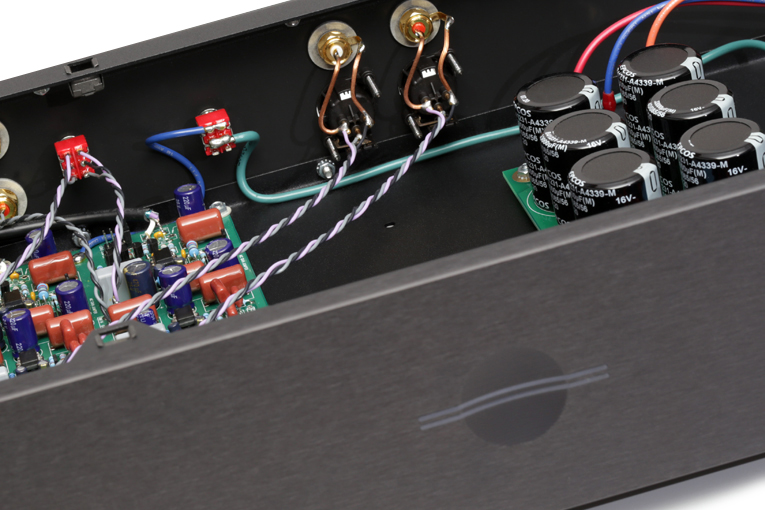
So there are 100-, 220-, 470-, and 1000-ohm settings for moving-coil impedance. The moving-magnet input presents a standard 47k-ohm value. There are also jumpers for a rumble filter and another set for moving-magnet capacitance.
Gain—and there’s plenty of it—is also chosen using jumpers. Choices for the moving-coil input are 61, 67, 75, 81, and 87dB, while the moving-magnet gain is fixed at 42dB. Yes, you read that right—the Saturn 401 will juice up the signal of a low-output cartridge by 87dB. When I had the bottom-feeder 0.2mV Top Wing Blue Dragon cartridge in-house, I only needed about 75dB of gain. I can’t imagine ever needing 87dB—but hey, it’s there if you need it. Further thoughts on that 87dB gain thing: in order to crank out that much amplification, you need a really quiet circuit. High gain is less than useless if it’s also amplifying noise.
The three moving-coil cartridges I had on hand—the EAT Jo N°8, the Sumiko Celebration 40, and the Shelter 901 that I recently had rebuilt by Soundsmith—all output something in the neighborhood of a plump 0.5mV, and the 67dB setting provided more than adequate gain.
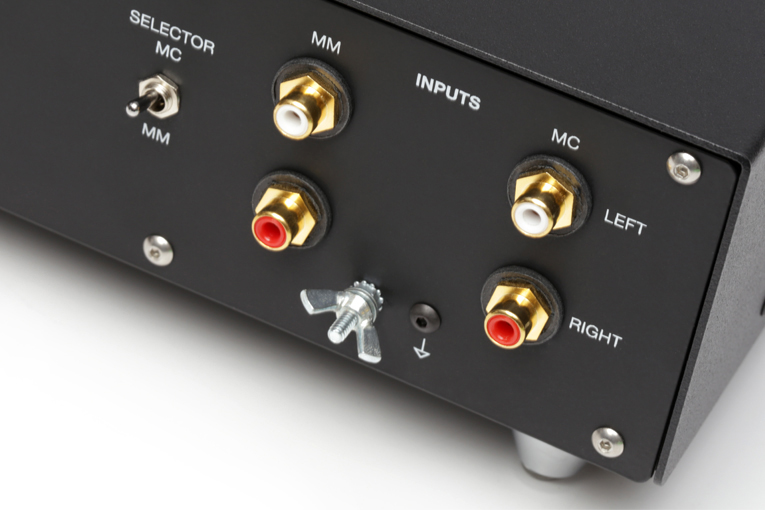
Around back are separate RCA inputs for moving-coil and moving-magnet cartridges. A toggle switch selects between MC and MM inputs, so you can hook up two turntables, something I found most handy, as just recently, I received Clearaudio’s Concept turntable, which came fitted with the company’s Performer V2 Ebony MM cartridge. There are both single-ended and balanced outputs, although the 401 isn’t a fully balanced circuit. Rounding out the back panel is a ground screw and a ground-lift toggle that I didn’t end up needing.
The power supply itself is a featureless black metal box that feels solid and well built but not unnecessarily dense. There’s an IEC input and a receptacle for the aforementioned umbilical.
As for the impedance and gain, 100 ohms worked best for the Shelter 901 and the just-in Sumiko Celebration 40, while 220 ohms was a better match for the EAT Jo N°8.
Goldilocks phono stage
I’ve had exceptional luck with phono stages of late. I’ve yet to experience an issue with noise being injected into my system by a phono stage. They’ve all sounded superb and been pretty much silent. Silence is vitally important. I’ve covered this before in my review of the Hegel V10 phono stage—basically a moving-coil cartridge requires heroic amounts of gain. Even undemanding cartridges, like the bunch I have on hand, are challenging prospects. The 67dB setting is a serious bump, and there are tons of opportunities to inject noise, right from the stylus, through the tonearm wiring and along the interconnect; a well-executed balanced input helps to reject this interference. And then there’s powerline noise, which absolutely needs to be filtered out.
A bunch of years ago, I used a set of HomePlug ethernet-over-powerline adapters to stream video to my basement projector. At some point in one of my incessant gear-swapping frenzies, I noticed an odd low-level buzzing—some random, digital-sounding hash—riding over the usual silence in my analog system. I tore that system apart, tried different cables, routed wires in different configurations—nothing helped. At one point, I suspected a fault in the phono stage I was using at the time and nearly incurred a large cost for sending it back to the manufacturer. But eventually, I looked askance at that HomePlug adapter. It wasn’t plugged into the dedicated circuit I use for my audio system, but I unplugged it anyway, and—what do you know?—the noise vanished.
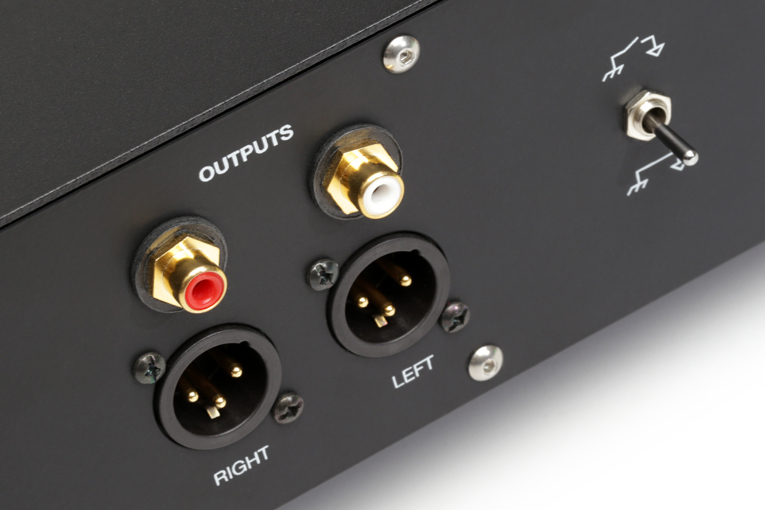
Point being, the insane gobs of gain demanded by a moving-coil cartridge place a heavy demand on the phono stage. But back to the Saturn 401. The first thing I do when I inject a new phono stage into the system is to turn my preamp volume up and up, until I start hearing noise through the speakers. I had to turn the preamp up significantly higher than I ever do when listening to music before I heard any noise emanating from the speakers, and the noise that I did hear was a fairly inoffensive, pale hiss. I hereby declare that the Saturn 401 is a quiet phono stage. That said, the measurements will reveal just how quiet it actually is.
First cartridge up was the EAT Jo N°8. I’ve listened to this cartridge now for over two years, and it’s got a ton of miles on it. Juicy and rich, warm and blooming, but with excellent retrieval of detail, the Jo N°8 is a massive bargain. And through the Saturn 401, it came alive. There’s some similarity in presentation between the EAT and the Saturn—a shared feeling of ease and relaxed depth. That said, the Saturn 401 delivers music with a light touch, revealing much of the space around the notes, which counters the EAT’s richness. I wouldn’t call the Saturn 401 airy, so much as delicate. Listening to an old favorite of mine—Massive Attack’s Protection (Wild Bunch 7243 8 39883 1 0), and “Better Things” in particular—I got a huge dollop of bloom around Tracey Thorne’s voice. On my copy, Thorne’s huge, evocative voice is redolent with sibilance, and the Saturn dredged up a halo of information and layers of detail and inner light around a solid central image.
I noted this excavation, this conjuring up of detail from sibilance, on several recordings, across all the cartridges I used, and although it was most noticeable on the Celebration 40 and the newly rebuilt Shelter, I could also hear it through the slightly darker EAT. Please don’t take this as me saying that the Saturn 401 was accentuating sibilance. That’s not it at all. The Saturn’s portrayal of the upper registers was correct in both level and tonal balance.
Just the other day I received a reissue of Cowboy Junkies’ album The Caution Horses (Sony/RCA 07863520581) in the mail. This album is in my top three by the opiate-drenched Canadian folk group. Of the two other faves, there is—of course—The Trinity Session, which I wrote about at length in my column on SoundStage! Ultra, although the process of writing that article almost ruined the album for me. Also fighting for top position is Pale Sun, Crescent Moon, which is a bit livelier than the other two, but a full listen still makes it feel as if there’s a 20-pound weight sitting on your head.
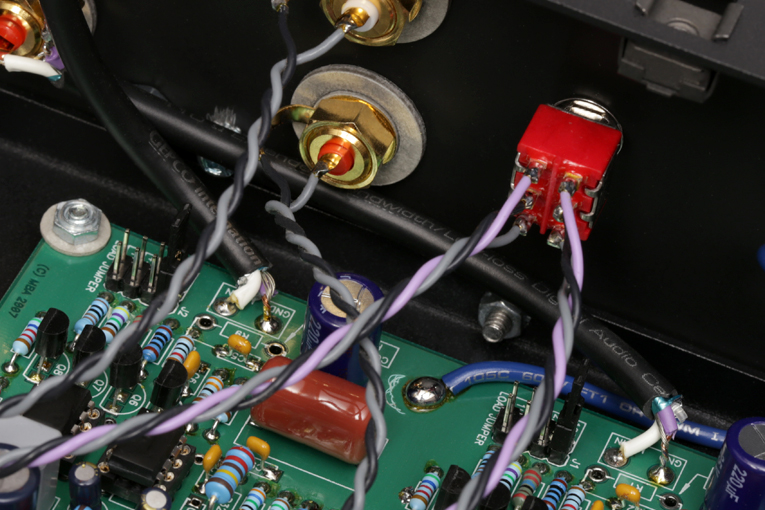
I love the Junkies, though, and Margo Timmins was my first—and I guess only—rock star crush. Back to The Caution Horses. This reissue is spread across two LPs, and the write-up at https://cowboyjunkies.com/tag/the-caution-horses/ says that the source was remastered with the help of Peter J. Moore, the original producer. There are so many great tracks on this record, but the lyrics of “’Cause Cheap Is How I Feel” are enough to raise the hairs on my neck:
I think I’ll find a pair of eyes tonight, to fall into
And maybe strike a deal
Your body for my soul, fair swap
’Cause cheap is how I feel
But there’s also the sound, the texture, the miles-deep emotion of Margo Timmins’s voice, and through the Saturn 401, I could clearly hear that information-in-the-sibilance thing going on, how there was so much more musical meaning in the new reissue compared to my very-good original pressing (RCA/BMG 2058 I-R), which—interestingly enough—is pressed on a cool, translucent black vinyl.
Flip the record and take a listen to “Powderfinger” and its first a cappella bar. It’s almost like you can hear right into Timmins’s mouth, into what she’s trying to tell you. It’s delicious, and the Saturn 401 added a good serving of meaning to this track, even though I’ve listened to it for years, I tell you.
Swapping in the Sumiko Celebration 40 cartridge, I continued cycling through my Cowboy Junkies’ records, sitting there like George Costanza hugging a pillow while watching a Marisa Tomei movie.
Pale Sun, Crescent Moon isn’t as iridescent as The Caution Horses, but the recently remastered double album (Sony/RCA 19075864791) is still magnificent. There’s more focus on the backing instruments, and there’s a crisper, more electric feel. It’s almost—but not quite—exciting. The Celebration 40 is a bit zingier than the EAT. There’s a definitive core of smoothness, an ease to the Sumiko, but it’s definitely got more zip to it.
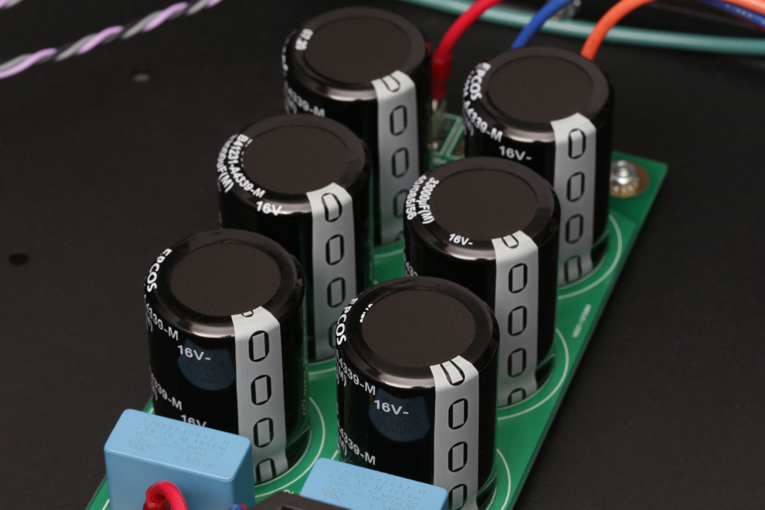
It was here, listening to the Sumiko, that I got to the heart of the Saturn 401. This combo, the Sumiko with the Saturn 401, opened up a huge volume of air between my speakers. The Sumiko’s great—you’ll read about it shortly—and it revealed just how incredibly spacious sounding the Saturn is. Since I had the Klipsch La Scalas in my system, I’ve regularly played the Thelonious Monk Quartet’s Monk’s Dream (MOVLP842), as it evokes the memory of how insanely live this album felt when played through those enormous speakers. My Aurelia XO Cerica XL speakers don’t do size or scale anything like the La Scalas could, but they counter with imaging that can nearly put your eye out. And my mind fills in the difference.
The Saturn, though—this fairly modest phono stage further expanded the size of the images, along with floating a huge amount of air around each instrument. It’s got a delicate touch, does the Saturn. In the midst of the huge sound of Monk plonking away on “Bright Mississippi,” I could feel—heck, I could nearly see—Frankie Dunlop’s crisp snare. The drums are hard left on this recording, but even so, I could totally see the positioning of the snare, delineated from the hi-hat and kick drum. Note that just now I said I could see the positioning of the drum components. I didn’t say hear because this is imaging so tight and crisp it blurs the senses. The Saturn 401 throws a palpable image, one that builds on that reproduced by the already superb Aurelias. We’ve got COVID going on here in Toronto (no surprise there), but I really, really wanted to invite people over to share the sound of this system as it’s configured right now, because honestly, I don’t think I’ve heard it sound better. I feel like I should be charging admission for listening privileges.
It’s that air thing. From the information contained in sibilance to an almost hyper-real reproduction of overtones around the fundamentals on drums and piano, the Saturn 401 dredged up space around each musical component. In some ways, I’d have to say that this is tube-like behavior, but it comes without any of the blurring that can come with tubes. Let’s just say that the Saturn’s imaging prowess and presentation of mids and highs is world class with a cherry on top.
Down at the bottom end, I felt a touch conflicted. I waffled between feeling utterly enraptured by the Saturn 401’s presentation of bass and occasionally thinking it was maybe just a touch lean. I continue to be amazed by Harkness’s album The Occasion (Wildchild Records WCR001LP), which I wrote about in the January instalment of “For the Record” on SoundStage! Ultra. There’s just so much going on in this record. Harkness was a bassist first and foremost—both a technical master and adept at leading with a juicy groove. So it’s somewhat surprising to find that there’s not much in the way of lead bass in The Occasion. It’s there, but you have to listen carefully for it. Down low, almost hidden in the mix of the title track, is some of Harkness’s lithe, quick, rhythmic bass work. With the Saturn 401 running the show, I had to listen a touch more carefully, as the actual level seemed just a tiny bit lower than I’m used to. That said, once I caught the aural focus, I found it exceptionally easy to follow along. In the end, I moved my speakers back a couple of inches, which boosted the bass just a touch without interfering with other aspects of the frequency range. And with this slight adjustment, I got all the weight I needed, along with a suppleness and rhythmic flow that I quickly came to value and never wanted to let go.
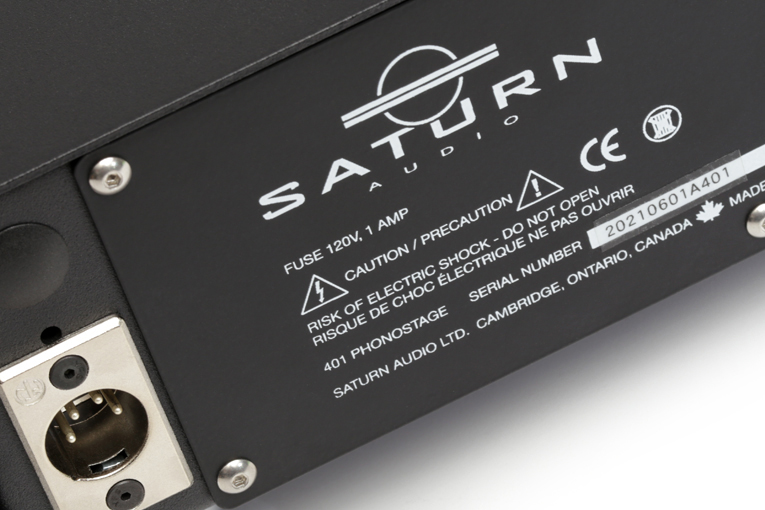
I hear you—it’s dangerous to make any absolute claims about bass or treble reproduction when it comes to a phono stage. There are just too many variables involved. Lower the impedance and the highs recede and the bass thickens up. Lower the cartridge tracking weight and it goes the other way. It’s a complex dance, one that makes it tricky to claim any absolutes in this arena. Suffice it to say that the Saturn 401 is very even-handed in its treatment of the frequency extremes, with only a tiny bit of knob-twiddling required on your end.
Baby, please don’t go
I recall with great longing my languorous review period with the $25,000 Constellation Andromeda phono stage. Over the years, I’ve spent time with some very good phono stages—the Simaudio Moon Evolution 610LP being one of the best, the iFi Audio iPhono3 Black Label being one of the best for the money, and a bunch more in between from Hegel, Aqvox, EAT, Ayre, and Blue Circle. It’s likely I’m forgetting one or two, but hey, I’m starting to forget why I’ve walked into rooms these days.
All of these phono stages have one thing in common—I’ve enjoyed them all. They’ve each put their own stamp on the way they present music—some being more up front, and others reflecting a more relaxed, more tube-like approach.
The Constellation, though, was the One Phono Stage to Rule Them All. It was huge, magnificent. It sounded so good that I often found myself in honest awe of how well it worked.
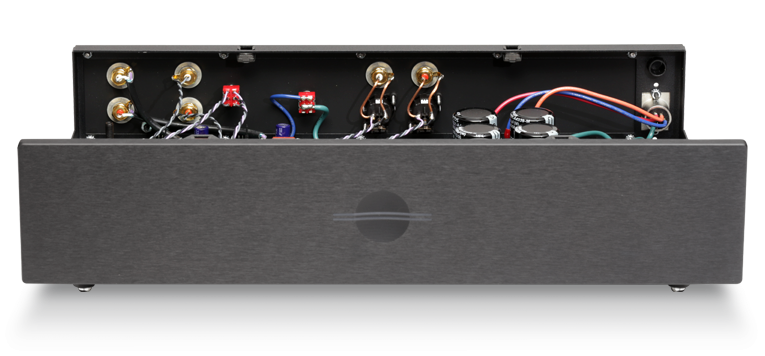
I was never entirely comfortable with the Constellation, though—it was just too damn expensive, too extravagant. Having this monster residing in my system felt to me like parking a Bugatti outside my modest Toronto townhouse. No, for my needs, in my system, I just felt more at home with my own Aqvox. So when it was time to ship off the Andromeda, despite mourning the loss of a magnificent-sounding component, I felt a slight sense of relief. Back to baseline.
So why am I mentioning a phono stage in this review that retails for over eight times more than the component I’m testing?
I’m doing so because, during the time I’ve had the Saturn 401 in my system, I have been—against my better judgement—comparing it to that monster Constellation. They’re different sounding, that’s for sure. The Constellation shot out a denser, chunkier soundstage and had more weight on the bottom, but the Saturn 401 counters with a greater sense of bloom and larger, more three-dimensional images. I was contrasting them, you understand, based on how much I enjoyed each phono stage’s overall sound rather than on overt similarities. That I found myself even comparing these two phono stages should tell you that the Saturn 401 is a bargain. That I felt the Saturn 401 filled the void left by the Constellation’s departure should tell you how much of a bargain it really is.
. . . Jason Thorpe
jasont@soundstagenetwork.com
Note: for the full suite of measurements from the SoundStage! Audio-Electronics Lab, click this link.
Associated Equipment
- Analog sources: VPI Prime Signature turntable; EAT Jo No8, Sumiko Celebration 40, Shelter 901 (Soundsmith retip), Roksan Shiraz cartridges.
- Digital source: Logitech Squeezebox Touch.
- Phono stages: Aqvox Phono 2 CI, iFi iPhono3 Black Label, Hegel V10.
- Preamplifier: Sonic Frontiers SFL-2.
- Power amplifier: Bryston 4B3.
- Integrated amplifier-DAC: Hegel H120, Eico HF-81.
- Speakers: Focus Audio FP60 BE, Estelon YB, Aurelia Cerica XL.
- Speaker cables: Audience Au24 SX, Nordost Tyr 2.
- Interconnects: Audience Au24 SX, Furutech Ag-16, Nordost Tyr 2.
- Power cords: Audience frontRow, Nordost Vishnu.
- Power conditioner: Quantum QBase QB8 Mk.II.
- Accessories: Little Fwend tonearm lift, VPI Cyclone record-cleaning machine, Furutech destat III.
Saturn Audio 401 Phono Preamplifier
Price: $2900.
Warranty: Ten years, parts and labor.
Saturn Audio Ltd.
PO Box 23054
Cambridge, Ontario
Canada
N1S1W4
Phone: (519) 623-1212
Website: www.saturnaudio.com






















